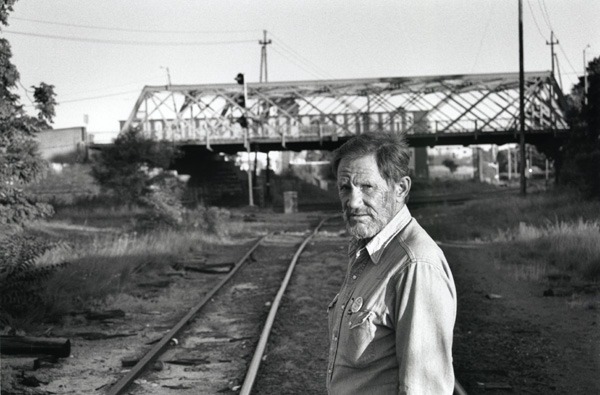
Harm’s Way
Written by Emily Jansen | Posted by: Anonymous
First produced in 1999, the fast-growing Provincetown International Film Festival kicks off its fifth year of programming this June. Scheduled for June 18-22, this year’s line up includes 49 new features –31 dramatic and 18 documentaries. One film that is garnering special attention is "To Do No Harm," a documentary that examines the link between the current trends in HIV infection, drug use and needle exchange programs in the Commonwealth of Massachusetts.
More often than not, heroin is the drug of choice for injection drug users. In Massachusetts, the number of people living with HIV and AIDS who are injection drug users makes up 34% of the total HIV infected population. The 68-minute, independently produced piece takes an in-depth look at the theory and practice of Harm Reduction — a set of practical strategies aimed at reducing the negative consequences of drug use and a host of other social maladies. The documentary gives viewers an inside look at the four legal state-mandated needle exchange sites in Boston, Cambridge, Northampton and Provincetown.
Provincetown’s representation in "To Do No Harm" is just part of the reason that this film will be festival favorite. Additionally, this "Cape made" documentary was written, produced and directed by Charles A. Sessoms, the former Director of the Provincetown Needle Exchange Program and a 25-year veteran of film and video production. Originally from New York, Sessoms’ career has taken him throughout the country and around the world. NewEnglandFilm.com caught up with Charles Sessoms at his home in Orleans, Massachusetts, to learn more about this penetrating documentary.
EJ: I know you have worked extensively in production as well as in the health services field. Tell me a little bit about your background.
Sessoms: I worked in public television for years and have been in the film business for a long time. The issues that surround Harm Reduction and injection drug use have been very important to me for a while. I was in Amsterdam in 1992, actually during the International AIDS Conference, making a film for an organization called the Center for Natural and Traditional Medicine [now defunct] which was an organization in Washington DC. I went over for what was supposed to be a couple of weeks to direct a film and then to come back and edit in the States. I ended up staying in Amsterdam for about 5 months.
During that time was my first introduction to the idea of Harm Reduction and needle exchange as a public health intervention. My first reaction to it actually was like most people — I thought it was pretty crazy. I met some people who were involved in it who said to me "well, why don’t you come and see how we do this and you will get an idea that this is not what you think it is." And what I found from looking at it was that the practice and philosophy of Harm Reduction actually ended up benefiting the entire society and not just the drug users. What it did was take a marginalized group of people and actually draw them in, which, drawing them into the community, drew them into services and into medical care and into all kinds of possibilities… And so the whole society befitted actually. It became obvious to me that this was a good thing. Fast forward to a number of years later and I came here to live on the Cape. There was an opportunity for me to work on a needle exchange down in Provincetown, and so I became the Director of the needle exchange in Provincetown and ran a program for a couple of years.
EJ: What prompted you to make the film "To Do No Harm"?
Sessoms: The thing that prompted me to make the film was that I looked around for ways to increase education about needle exchange on the Cape. I looked for films about needle exchange that I could use as an icebreaker for doing education for people in the community. What I found were a number of short films that only talked about needle exchange in a vacuum. It talked about the actual practice of needle exchange but not the surrounding issues which had to do with the "War on Drugs" and various other things which make the needle exchange so different here in the United States than it is in other parts of the Western world. So I decided that I would make something. The impetus for making the film was that I didn’t see a really comprehensive discussion of what needle exchange is really about in the U.S.
EJ: Can you describe me for me exactly what the specific strategies of Harm Reduction are. What constitutes the theory of "Harm Reduction"?
Sessoms: Most drug treatment makes the assumption — or actually makes the mandate — to drug users that they will treat the users when they begin to believe that they can stop using. So when they go to drug treatment it is because the person comes and says, "I am ready to stop." What has been determined by a number of noted psychologists and other people who have written a great deal about this is that change generally doesn’t take place that way. There are stages to change. So one of the Harm Reduction tools is a model called "Stages of Change." Taking into account that most drug treatment has only been able to meet drug users at the stage of change called "Action," what Harm Reduction advocates say that is that we will meet the drug users at the point of pre-contemplation. We will meet them right at the beginning when they are not even thinking about it; we will go to them. We will not wait for them to come to us. And so we try to reduce the harms that may come to them as they are moving through this continuum to where they may change. There was a saying among Harm Reduction advocates in New York that "dead addicts don’t recover." If people die from things like HIV and Hepatitis and so forth, they never have an opportunity to recover. Harm Reduction has decided as a model that it will meet drug users earlier in that continuum of change.
EJ: Where does needle exchange fit into this model?
Sessoms: Needle exchange becomes the place where we say, ok, if this person is not ready to stop injecting drugs, then we can give them clean syringes. That will keep from infecting other people and sharing syringes with each other and infecting other people with diseases that can kill them. As Deborah Small — one of the women from the Drug Policy Alliance — says in the film, even though we may not like that people use drugs, we care more about them as human beings rather than to see them die from some disease. We try to prevent that from happening as we begin to work with them and draw them into care. I mean some of the experiences I have had working at the needle exchange while I was Director were unbelievable — people coming in and the first time you see them all they want is a needle and they just run out the door. But then seven, or eight months, or a year later you get them into treatment because they keep coming back and talking and you build up some trust. They recognize that we really are there to help them.
EJ: To what extent have the principles of hard reduction and needle exchange programs been instituted in Massachusetts?
Sessoms: There are four needle exchange programs. Back in ‘95 those programs were set up and legislation was passed to make them possible. But the legislation also said that each town where the needle exchange program would be set up could decline to have the needle exchange program if they don’t want it. They had to have town approval for the program to have it. So only four towns [Boston, Cambridge, Northampton and Provincetown] agreed to this even though the Department of Public Health has been trying to get more places where people are willing to have the programs in their town.
What gets featured in the film actually is a couple of the other places where there is a real need for needle exchange there because there is a big injection drug use problem — like in Holyoke, Springfield, where the towns refuse to have needle exchange. We feature some of the needle exchange workers, and Harm Reduction advocates who have been working really hard to try and get this to happen and struggling with the city governments. But to no avail so far.
EJ: Describe your film. Is it more focused on the HIV-positive injection drug user or is it more focused on the principles of Harm Reduction?
A lot of countries in the West – Australia, Germany, the Netherlands – have adopted a policy of a Harm Reduction approach towards, specifically, drug users — [these countries are] really beginning to see it as a medical issue. Here in the United States we have decided that we want to have a "War on Drugs" and to stamp out drugs. But the "War on Drugs" has been a complete failure. Billions of dollars later, it is a complete failure. As a matter of fact, the influx of heroine into the country is increasing. Then, also, the manufacture of synthetic drugs in the country is on the increase…things haven’t gotten better they actually have gotten much much worse for people who use drugs.
Through interviews with people — not only people who work with needle exchange but also six addicts who appear in the film and talk about their drug use — I think the big question that is being raised is why in the United States are we unable to recognize this as a medical issue and [why do we] continue to see this as a moral and then thereby a criminal justice issue. And it points out the fact that a lot of industry has sprung up around this [the War on Drugs] — the privatization of prisons, and a lot of stuff. You’d have to see it to recognize how many things are tied together, as to how complicated this gets, as to why we are not really addressing this as a medical issue, which is what it is. When you find a person who is a career drug user, someone who has adopted not to experiment but to take up drugs as a career activity, generally they are doing it for very, very good reasons. They are generally trying to treat medically something that they haven’t been able to either find medical treatment for, or they ran into illegal drugs before they even recognized that it was a medical problem and now are addicted to drugs. So a number of the addicts in the film will talk about their bouts with depression and their inability to find reasonable medical answers to that. I guess what I wanted to do was to give a face to drug users and say this is not what you think it is, this is not about the stuff that you see of people racing around in the streets on some cop show. These are your neighbors. And that is essentially what we tried to do. Because that is the truth of the matter.
EJ: You mentioned putting a face to drug users. What have you found are the stereotypical perceptions about drug injection drug users?
Sessoms: A stereotypical idea is this one that people are having a good time. Which they are not. And that they are just out getting high. Maybe some people start out that way. Maybe some middle-class people use drugs to get high. Especially in economically depressed communities — which is another thing that is important to recognize about the prevalence of injection drug use — its one of those things that the towns that I mentioned — Springfield, Lawrence, Holyoke –one of the things that they all have in common is that they used to be towns where there was an enormous amount of industrial activity. And that industrial activity has quieted down. There is high unemployment in those areas, and wherever you find that you will find people abusing alcohol and drugs. Whenever the infrastructure of a community begins to fall apart, this is what you find. When people are unable to support themselves and are living a life with some level of depression, some of them, but not all, some of them will turn to alcohol and drugs.
EJ: How connected are the issues of injection drug use with HIV/AIDS infection?
Sessoms: I think when Harm Reduction and needle exchange first became very popular in Europe it was because of HIV — because it was recognition that this disease was being transmitted by injectors sharing syringes. Primarily because they couldn’t get their hands on clean ones, and so they would share them. It became obvious to people in Europe that implementing needle exchange was very important to cut back on the amount of virus that was in the world. The whole idea of injection drug use as a way of transmitting disease. I guess it became much more of an issue when HIV came on the scene than it was when they were dealing with Hepatitis.
EJ: So the HIV/AIDS epidemic ties into your film because Harm Reduction principles came into prominence with the rise of the epidemic?
Sessoms: That is correct. That is when people started to say we have to take a Harm Reduction approach to this because people are dying and they are also infecting others.
EJ: What are you hoping a viewer will come away form this film understanding and thinking about?
Sessoms: I think that if one thing happens — and I think that the times we screened it earlier this did happen so I am happy about that — it is that people realize that this is a much more complex issue than they thought it was. That the whole idea of injection drug use is not as simple and easy for them to demonize anymore. If people come away recognizing that this is a much more complex issue and begin to ask and think about some of the questions that are raised: why does the Untied States, which is so much like a lot of these other countries that have adopted Harm Reduction, why here we can’t seem to wrap our minds around it even though Yale University, UCLA, the Center for Disease Control, the National Institute for Infectious Disease — have all said that needle exchange is a viable prevention for HIV and Hepatitis, and that it actually doesn’t create any new drug users. They have all touted the efficacy of it but still there is a Federal ban on funding for needle exchange.
EJ: The first big showing of this film is at the Provincetown Film Festival. What’s next?
Sessoms: This process just started. This is the first selection for "To Do No Harm" but we have entered other festivals. I would like to continue with this project in some way because of what is happening — the de-funding of needle exchange even more than it has been around the country. I would like to explore that a little more.
For more information on the Provincetown International Film Festival visit their web site at http://www.ptownfilmfest.org/.
'To Do No Harm' will be shown Saturday June 21st at the Crown & Anchor in Provincetown. Admission is $9.00. The film includes interviews with major national authorities of the Harm Reduction Movement including Edith Springer of New York’s Harm Reduction Institute, Governor Gary Johnson (R) of New Mexico, Ethan Nadelman of Executive Director of the Drug Policy Alliance in New York City, Dr. Jean McGuire, Director of the Massachusetts Department of Public Health’s HIV/AIDS Bureau, Ronnie Watson, Cambridge Police Commissioner, and other civic leaders instrumental in the development of the four existing needle exchange sites in the state. The documentary also features interviews with six active injection drug users as well as outreach workers and program managers from needle exchange programs within and outside of Massachusetts. For more information on 'To Do No Harm' contact csessoms@cape.com. For more information on the Provincetown International Film Festival visit their web site at http://www.ptownfilmfest.org/.










